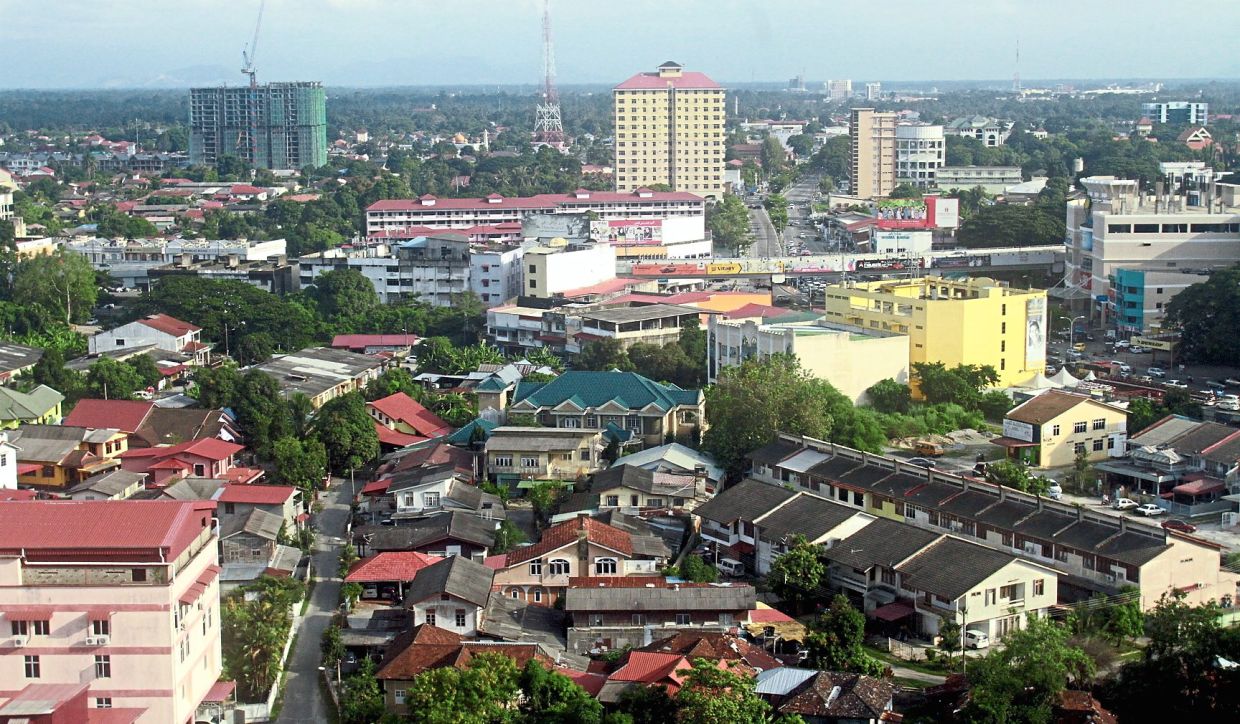
KOTA BARU: Once the salvation to decades of water woes in Kelantan, the use of underground water is threatening to sink some parts of the state, with experts warning of more floods as a result.
Although barely seen by the naked eye, the ground settlement caused by the drawing of water could bring more floods, according to a land surveying expert.
Dr Yong Chien Zheng told The Star that his study on the ground movement in the state has found evidence of parts of the state sinking up to 4.22mm per year.
The study, titled Groundwater extraction-induced land subsidence: A geodetic strain rate study in Kelantan, Malaysia, was published in 2018.
He said although insufficient data made it difficult to pinpoint the main cause, there was a high correlation between subsidence – the sinking of land or buildings to a lower level – and groundwater extraction.
“The current subsiding rate in Kelantan is very much like Jakarta before the 1970s. The growing demand for groundwater in the Indonesian city drove a massive groundwater extraction that led to increased subsidence rates.
“As a result, about 40% of Jakarta is now below sea level.
“We don’t want what happened in Jakarta to happen here, that’s why I published a paper of my study, hoping that it will warn the state government about the use of groundwater,” added Yong, a lecturer of surveying at University of Otago, New Zealand.
Sick of the constant cuts and murky teh tarik-like water, most Kelantanese have been turning to traditional ways of taking underground water or “air boring” as the locals call it in a combination of Malay and English words.
“Boring” is the drilling process that allows for underground water extraction.
Yong said his study, which was conducted based on 17 years of GPS (Global Positioning System) data in 11 different locations, found that Kuala Krai had the highest subsidence rate of 4.22mm per year.
“Eight out of 11 stations were subsiding and the result of my study was similar to another local research (by Assoc Prof Ami Hassan Din from Universiti Teknologi Malaysia in 2015) who employed a different technique,” he said, adding that he used data from 1999 until 2016.
He believes the demand in Kelantan would have significantly grown since 2010 due to industrial development and was expected to continue to grow.
This, he added, would lead to an increase in the subsidence rate.
“The subsidence rate will go up due to the lack of a scientific approach to control the balance between groundwater usage and recharge rate. In the worst-case scenario, we can expect an acceleration of subsidence due to economic growth.
“However, this prediction is inconclusive without further data analysis,” he said.
Yong said eventhough groundwater was a good alternative for clean water resources due to its easy accessibility and cost-effectiveness, a scientific extraction approach was needed to ensure sustainability.
“Tokyo is a classic example of successful land subsidence mitigation with a restriction on groundwater pumping, which resulted in a ground uplift of 16cm with the cessation of land subsidence,” he added.
Yong called on the state government to have a centralised authority to track total groundwater usage and to have written legislation and policy for groundwater management.
“The main drawback of the study I did is the lack of groundwater table monitoring information at every production well, therefore it is less likely to provide a realistic physical connection of the vertical subsidence and well distribution.
“A denser GPS network in Kelantan with additional sensors can provide much more detailed information in monitoring the highly localised land subsidence activity,” he said.
On July 28, Environment and Water Minister Datuk Seri Tuan Ibrahim Tuan Man said the water woes in Kelantan were due to Air Kelantan Sdn Bhd’s (AKSB) inability to govern and manage its finances, which caused it difficulties in providing quality treated water to the people of Kelantan.
AKSB, he said, was having trouble developing water assets to meet growing demand, upgrading existing assets to increase margin reserves, meeting compliance with drinking water quality parameters, and implementing a pipe replacement programme to reduce the rate of non-revenue water (NRW).
Tuan Ibrahim said several measures were taken to resolve the water issues in Kelantan, including strengthening AKSB’s financial position, upgrading and constructing new water treatment plants, and focusing on the pipe replacement programme.
Hydro-environmental specialist Datuk Dr Azuhan Mohamed, however, said no incidents of land sinking were reported in Kelantan.
Azuhan, who retired as AKSB general manager earlier this month, said action had been taken to identify the sinking claims, but checks with the Mineral and Geoscience Department found no such incidents.
“To my knowledge, there’s none (land sinking in Kelantan).
“I am not sure which areas the study looked at. We tried to get more information from the Mineral and Geoscience Department, but as far as I know, there are no such
incidents.
“The study probably looked at some rural areas,” he said when contacted.
Azuhan said the rate of sinking recorded by the study was small and could have been caused by many other factors, such as soil loss due to heavy rains, soil compaction, underground mining, and the collapse of abandoned mines.
“The small volume of groundwater extraction will not cause land sinking and if there was land sinking, the people in Kelantan would have complained about cracks on their houses or their stairs falling out,” he said.
Azuhan also denied any excessive underground water abstraction, adding that the groundwater only accounts for 24% of the total raw water abstracted by AKSB for the supply of treated water to its customers.
“Malaysia has an abundance of rainwater that will allow for the water to be recharged,” he added.
Source: The Star


